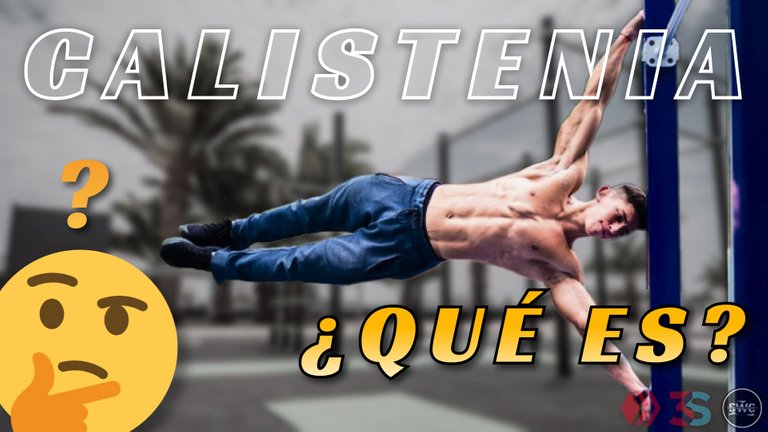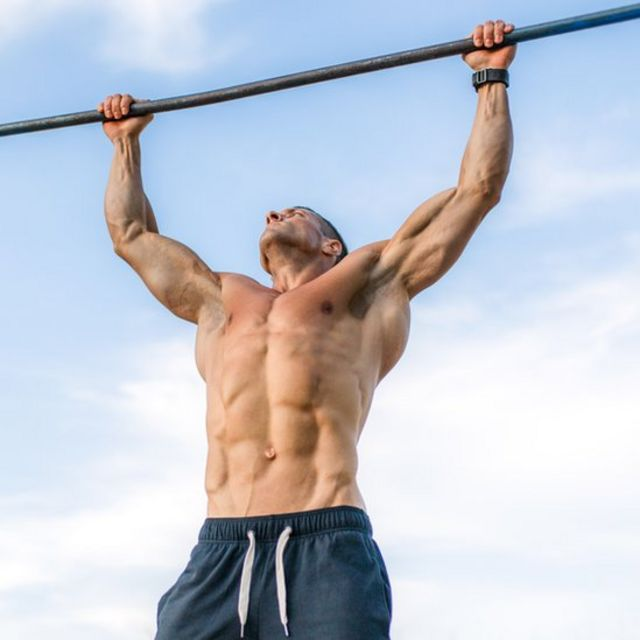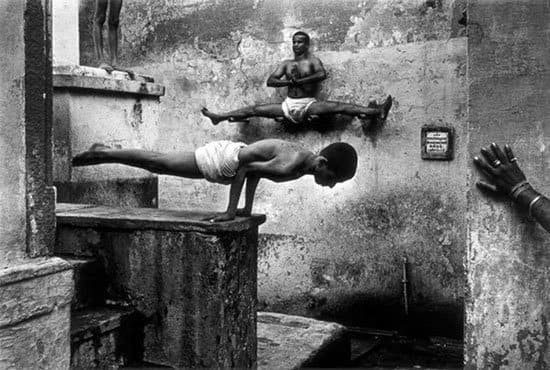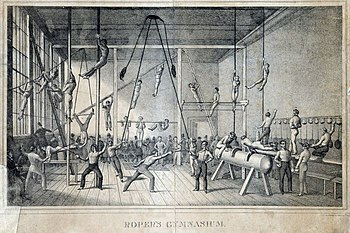¿Qué es Calistenia - Street Workout? - Descúbrelo en este Post - El conocimiento es poder [ESP|ENG]
Esto es Calistenia - Street Workout [ESP|ENG]
This is Calisthenics - Street Workout [ESP|ENG]

Hola que tal mi gente de #hive y #swc espero se encuentren muy bien. En esta oportunidad quiero compartir con ustedes lo que es la Calistenia - Street Workout en esencia. Este post será algo diferente a lo que comúnmente les comparto, ya que no hablaré o mostrare rutinas, simplemente les daré la parte teórica de lo que es esta maravillosa disciplina. A parte contaré algo de su historia, metodologías y objetivos actualmente. Sin mas que agregar, los dejo con el contenido amigos, espero sea de su agrado y pueda transmitir lo que siento por esta disciplina.
Hello how are you my people from #hive and #swc I hope you are very well. On this occasion I want to share with you what Calisthenics - Street Workout is in essence. This post will be something different from what I usually share, since I will not talk or show routines, I will simply give you the theoretical part of what this wonderful discipline is. In addition, I will tell something about its history, methodologies and current objectives. Without more to add, I leave you with the content friends, I hope you like it and can convey what I feel about this discipline.

Calistenia - Street Workout
Calisthenics - Street Workout
🇻🇪Español🇻🇪
La calistenia es una disciplina la cual se trabaja con el propio peso corporal. En esta disciplina, el interés está en los movimientos de las cadenas musculares que componen nuestro cuerpo. Calistenia, etimológicamente hablando significa: kalos (belleza) y sthenos (fortaleza) ambas palabras derivan del Griego y se unen para formar este maravilloso nombre el cual es super acertado. El objetivo de esta disciplina es la adquisición de fuerza, resistencia, agilidad, equilibrio, coordinación y flexibilidad a través de un entrenamiento con el propio peso corporal.

Además de ser una disciplina de entrenamiento que con el paso del tiempo está ganando mucha popularidad en el mundo de la actividad física (fitness), ahora es considerada como deporte en varios países. Mucha gente se unió a este tipo de ejercicios ya que no exige mucho tiempo y es muy económico, pues solo requiere del propio cuerpo para practicarlo, sin embargo es considerado el deporte de los Dioses, por la belleza y calidad de los ejercicios.
También se puede considerar la disciplina de la Gimnasia Olímpica como el deporte que sentó las bases para la que sería más adelante la Calistenia, pues ambas disciplinas comparten muchas similitudes tanto en movimientos como en los entrenamientos para dominar la disciplina. Este tipo de entrenamiento, aparte de buscar un aumento de fuerza y músculo, también busca la posibilidad de optar por un rango más grande de movilidad y capacidad para controlar nuestro propio cuerpo.
En el mundo antiguo, la calistenia se usaba como la principal fuente de preparación física para los militares, ya que era fácil de organizar, fácil de aprender y tenía la mayor transferencia a las habilidades y movimientos reales que necesitaban los soldados en combate. Algo que realmente se mantiene en la actualidad por su practicidad y aporte al poderío físico integral de los efectivos, combinado con los beneficios anteriormente mencionados. Según Pierre Vernant, historiador clasicista francés centrado en la historia de las mentalidades, el origen de la calistenia está en la dicotomía Yemo-Kallisto (dios semita y protohitita, respectivamente, introducidos -según Amelie Khurt, orientalista francesa- en la cultura griega a través del comercio púnico en el siglo XII antes de la era cristiana) que equivaldría a Apolo y Hércules (gracia y armonía vs fuerza bruta), dicotomía que muestra una ruptura en la mentalidad griega arcaica (de raíces dóricas) sobre la moderna y más desarrollada, la jónica (ateniense).

Los ejercicios realizados en calistenia se dividen en básicos (ejercicios comunes para el fortalecimiento de los músculos), estáticos (ejercicios avanzados que consisten en mantener una misma posición por algún periodo de tiempo, estos requieren mucha fuerza muscular y en tendones, mayormente en tendones por lo que son más difíciles de conseguir) y dinámicos (ejercicios avanzados que consisten en el movimiento y balanceo del cuerpo, se utilizan en "freestyle", que aparte de fuerza requieren gran agilidad y reflejos).
🇺🇸English🇺🇸
Calisthenics is a discipline which is worked with own body weight. In this discipline, the interest is in the movements of the muscular chains that make up our body. Calisthenics, etymologically speaking means: kalos (beauty) and sthenos (strength) both words derive from the Greek and come together to form this wonderful name which is super successful. The objective of this discipline is the acquisition of strength, resistance, agility, balance, coordination and flexibility through training with one's own body weight.

In addition to being a training discipline that over time is gaining popularity in the world of physical activity (fitness), it is now considered a sport in several countries. Many people joined this type of exercise since it does not require much time and is very economical, since it only requires your own body to practice it, however it is considered the sport of the Gods, due to the beauty and quality of the exercises. exercises.
The discipline of Olympic Gymnastics can also be considered as the sport that laid the foundations for what would later be Calisthenics, since both disciplines share many similarities both in movements and in the training to master the discipline. This type of training, apart from looking for an increase in strength and muscle, also looks for the possibility of opting for a greater range of mobility and ability to control our own body.
In the ancient world, calisthenics was used as the primary source of physical preparation for the military, as it was easy to organize, easy to learn, and had the greatest transfer to actual skills and movements soldiers needed in combat. Something that is really maintained today due to its practicality and contribution to the integral physical power of the troops, combined with the aforementioned benefits. According to Pierre Vernant, a French classicist historian focused on the history of mentalities, the origin of calisthenics lies in the Yemo-Kallisto dichotomy (Semitic and proto-Hittite god, respectively, introduced -according to Amelie Khurt, a French orientalist- into Greek culture through of Punic trade in the 12th century before the Christian era) that would be equivalent to Apollo and Hercules (grace and harmony vs brute force), a dichotomy that shows a break in the archaic Greek mentality (with Doric roots) over the modern and more developed one, the Ionian (Athenian).

The exercises performed in calisthenics are divided into basic (common exercises to strengthen muscles), static (advanced exercises that consist of maintaining the same position for some period of time, these require a lot of strength muscle and tendons, mostly tendons so they are more difficult to achieve) and dynamic (advanced exercises that consist of movement and swinging of the body, are used in "freestyle", which apart from strength require great agility and reflexes).

Historia de la Calistenia - Street Workout
History of Calisthenics - Street Workout
🇻🇪Español🇻🇪
La calistenia empezó a desarrollarse en Francia en el siglo XIX. En 1822, comenzó a difundirse tanto en Francia como en Inglaterra. Marian Mason, publicó en 1827 "On the utility of exercise; or a few observations on the advantages to be derived from its salutary effects, by means of calisthenic exercises A few observation on callisthenic excercises" (En cuanto a la utilidad del ejercicio o un par de observaciones sobre las ventajas que se derivan de los efectos saludables de los ejercicios de calistenia). Astudillo publicó en París en 18 "Callisthénie ou gymnastique des jeunes filles" (Calistenia o gimnasia de las mujeres jóvenes). Un año más tarde, el libro se edita en Berna en alemán.

La popularidad de la calistenia como componente de la educación de mujeres se incrementó con la obra de los alemanes Friedrich Jahn y Adolf Spiess. En los EE.UU. la difusora de la disciplina fue Catharine Beecher, quien publicó en 1857 "Physiology and Calisthenics for Schools and Families" (Fisiología y calistenia para las escuelas y las familias).
🇺🇸English🇺🇸
Calisthenics began to develop in France in the 19th century. In 1822, it began to spread in both France and England. Marian Mason, published in 1827 "On the utility of exercise; or a few observations on the advantages to be derived from its salutary effects, by means of calisthenic exercises A few observation on callisthenic excercises" couple of observations about the advantages derived from the salutary effects of calisthenics). Astudillo published in Paris in 18 "Callisthénie ou gymnastique des jeunes filles" (Calisthenics or gymnastics of young women). A year later, the book is published in Bern in German.

The popularity of calisthenics as a component of women's education increased with the work of the Germans Friedrich Jahn and Adolf Spiess. In the USA, the promoter of the discipline was Catharine Beecher, who published in 1857 "Physiology and Calisthenics for Schools and Families" (Physiology and Calisthenics for Schools and Families).

Metodologías y Objetivos
Methodologies and Objectives
🇻🇪Español🇻🇪
La calistenia se define como un conjunto de ejercicios que centran su interés en los movimientos de grupos musculares, más que en la potencia y el esfuerzo, con el objetivo de desarrollar la agilidad, la fuerza física y la flexibilidad. Se intenta lograr la mayor contracción muscular y que el cuerpo adquiera una alineación correcta, ya que así permite modelar el cuerpo, mejorar la postura y definir un buen contorno corporal.
En las clases se realiza una entrada en calor y después se ponen en marcha una serie de ejercicios con un alto número de repeticiones cada uno, poniendo énfasis en los brazos, el abdomen, los glúteos y piernas. Se acentúa, no en el trabajo, sino en la forma de realizarlo, pensando en cada movimiento, en los músculos que se está trabajando y en si la postura es la correcta. Este método para ejercitarse repercute favorablemente en la postura y forma corporal, reduciendo enormemente el riesgo de lesiones que además, se ve disminuido por la ausencia de saltos, rebotes e impactos; por otra parte, se realizan estiramientos, trabajos localizados y la vuelta a la calma tiene un papel muy importante durante las clases calistenia. La calistenia conjuga técnicas de diversos puntos, entre ellos: la danza, el yoga, las artes marciales, la gimnasia olímpica y el stretching.
El método y las técnicas usadas durante una clase de calistenia convierten a esta actividad en apta para todo público, ya que no existen límites de edad, e incluso los kinesiólogos recomiendan la calistenia en patologías tales como la escoliosis, la hernia de disco o problemas de rodilla. El hecho de no provocar impactos en las articulaciones y de permitir modelar el cuerpo, tonificarlo y alinearlo al mismo tiempo, ha sido una de las razones por las cuales la gente escoge estas clases. Poner el cuerpo en movimiento, mejorar la postura, tonificar grupos musculares y cuidar las articulaciones pueden ser los motivos que llevan a la práctica de la calistenia. Al preparar la ejecución del swing de golf de forma correcta, se ve claramente que se conjuga plenamente la calistenia.
Actualmente, la Calistenia también se lleva al entrenamiento de alto rendimiento. Deportistas profesionales y semi-profesionales realizan distintas rutinas llevando este tipo de entrenamientos al máximo exponente. Esto debido a su libertad de practica, utilidad para la vida diaria, transferencia a otros deportes y agilidad tanto física como mental.
🇺🇸English🇺🇸
Calisthenics is defined as a set of exercises that focus on the movements of muscle groups, rather than on power and effort, with the aim of developing agility, physical strength and flexibility. The aim is to achieve the greatest muscle contraction and for the body to acquire a correct alignment, since this allows the body to be modeled, improves posture and defines a good body contour.
In the classes, a warm-up is carried out and then a series of exercises are started with a high number of repetitions each, emphasizing the arms, abdomen, buttocks and legs. It is accentuated, not in the work, but in the way of doing it, thinking about each movement, the muscles that are being worked and whether the posture is correct. This method of exercising has a favorable impact on posture and body shape, greatly reducing the risk of injury, which is also reduced by the absence of jumping, bouncing and impact; on the other hand, stretching, localized work and the return to calm play a very important role during calisthenics classes. Calisthenics combines techniques from various points, including: dance, yoga, martial arts, Olympic gymnastics and stretching.
The method and techniques used during a calisthenics class make this activity suitable for everyone, since there are no age limits, and even kinesiologists recommend calisthenics in pathologies such as scoliosis, herniated disc or problems on your knees. The fact of not causing impacts on the joints and allowing the body to be shaped, toned and aligned at the same time, has been one of the reasons why people choose these classes. Putting the body in motion, improving posture, toning muscle groups and caring for joints can be the reasons that lead to the practice of calisthenics. By preparing to execute the golf swing correctly, it is clearly seen that calisthenics is fully conjugated.
Currently, Calisthenics is also used in high performance training. Professional and semi-professional athletes perform different routines taking this type of training to the maximum exponent. This is due to its freedom to practice, utility for daily life, transfer to other sports and both physical and mental agility.

Sin más que agregar, espero les haya gustado el post.
Without more to add, I hope you liked the post and the tutorial too.

 |  |  |
Congratulations @isaaccrsw! You have completed the following achievement on the Hive blockchain And have been rewarded with New badge(s)
Your next target is to reach 6000 upvotes.
You can view your badges on your board and compare yourself to others in the Ranking
If you no longer want to receive notifications, reply to this comment with the word
STOPCheck out our last posts:
Brutal hermano, excelente post!💪🏼
¡Enhorabuena!
✅ Has hecho un buen trabajo, por lo cual tu publicación ha sido valorada y ha recibido el apoyo de parte de CHESS BROTHERS ♔ 💪
♟ Te invitamos a usar nuestra etiqueta #chessbrothers y a que aprendas más sobre nosotros.
♟♟ También puedes contactarnos en nuestro servidor de Discord y promocionar allí tus publicaciones.
♟♟♟ Considera unirte a nuestro trail de curación para que trabajemos en equipo y recibas recompensas automáticamente.
♞♟ Echa un vistazo a nuestra cuenta @chessbrotherspro para que te informes sobre el proceso de curación llevado a diario por nuestro equipo.
🏅 Si quieres obtener ganancias con tu delegacion de HP y apoyar a nuestro proyecto, te invitamos a unirte al plan Master Investor. Aquí puedes aprender cómo hacerlo.
Cordialmente
El equipo de CHESS BROTHERS
Saludos @isaaccrsw
Greetings @isaaccrsw